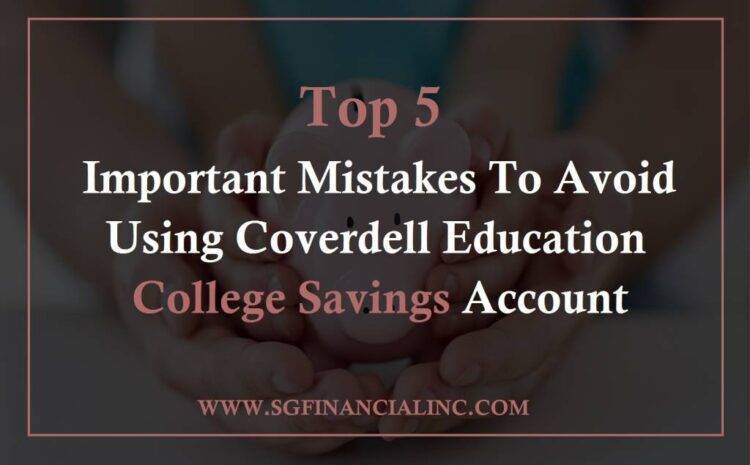
Top 5 Mistakes to Avoid When Using Coverdell College Education Savings Account
Coverdell Education Savings Account (ESA) is designed to help families pay for the education. This college savings plan is quite similar to a 529 savings plan. When the funds are taken out for qualified expenses, they are regarded as tax-free withdrawals. Moreover, the growth earnings are also kept tax-free. The funds from a Coverdell ESA can also be used to pay for K-12 expenses tax-free. However, the fees are lower comparable to 529 plan, despite more options available for investment.
The name itself is a bit of a misnomer. Cordell college savings account is not just reserved for college education. It can be used to pay for primary and secondary education too.
If you wish to start saving for education, Coverdell ESA is your best option. However, be sure to avoid the following mistakes when you decide to open such a college savings account;
1. Insufficient Savings
There is an annual limit to the maximum annual contributions you can make to Coverdell ESA. It cannot exceed $2,000 per student. This much limit over the contributions may rightfully seem insufficient for elementary, secondary or college tuition bill. However, you must remember that every little bit helps. Even the smallest amounts deposited regularly over a period of time can grow to a substantial size. In contrast, a college savings plan does not have a contribution limit.
2. Insufficient Planning
Coverdell College Saving Plans is intended for students 18 or younger. The deposits are subject to 6% excise tax if the contributions are made after the beneficiary turns 18. Moreover, the money must be completely withdrawn within 30 days of the recipient turning 30 years old. Otherwise, the earning portion will be subject to income tax, as well as a 10% penalty tax.
3. Inadequate Understanding of Finer Points
Most people do not understand the finer points before applying for Cordell ESA. This is a mistake. You must understand that Cordell ESA can adversely affect your chances for financial aid eligibility. However, the effect is minimal overall. Especially compared to other financial insurance plans.
4. Inadequate Understanding of Income Limits
Not everyone is suitable, neither eligible for Coverdell ESA. You would find a straight rejection if your gross annual income is $110,000 or more. Your ability to contribute up to $2,000 for a plan is reduced as the gross income rises above $95,000. Understanding such income limits will allow you to make a better decision on which college savings plan to opt for. It is our suggestion that if your income is too high for Cordell ESA, gift the money to someone who does qualify.
5. Poor Understanding of Qualified Withdrawals
Cordell college savings ESA offers a tax-free earnings growth and tax-free withdrawals. However, those withdrawals must be only used to qualified spendings if they are to remain tax-free. The qualified expenses for Coverdell ESA include;
- Tuition, fees, tutoring, special needs services, books, supplies, equipment.
- Room and board, uniform, transportation.
- Computer, other tech tools, internet access .
The earnings portion of all non-qualified withdrawals is subject to income tax. It is also subject to a 10% penalty tax.
Get Access to Cordell College Savings Account
SGA Financial Inc. as a top leading insurance agency provides you with an excellent opportunity to invest in Cordell College Savings Account. A Coverdell ESA helps you invest for your child’s future. Educational expenses – from elementary school through post-secondary. You also gain the option of investing in a broad variety of stocks, bonds, mutual funds and ETFs. Don’t forget to give us a call.

